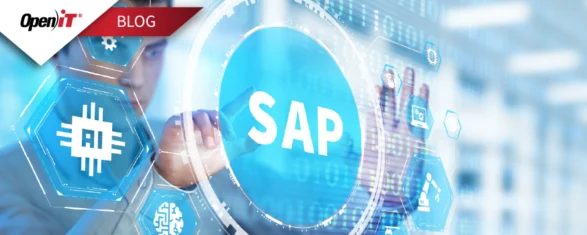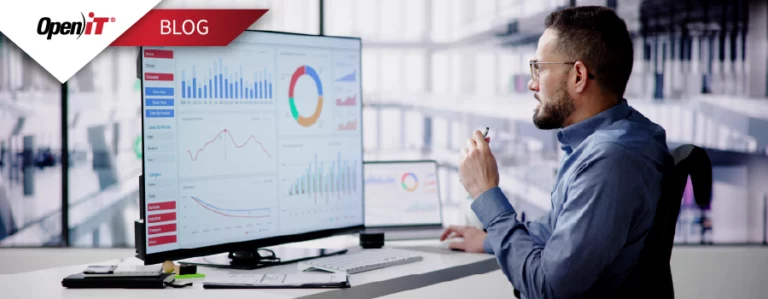In an era where technology is deeply woven into the fabric of most organizations, effective software license management is crucial to ensure operational efficiency and sustainability.
Just consider for a moment how many apps you have access to on your mobile phone, tablet, and laptop – each of them has some form of license protecting the vendor’s IP rights and generally with a licensing fee or other source of income, such as advertising.
At an organizational level, the amount of software required to keep the business running is a multiple of each automated activity in the business, multiplied by the number of employees engaged in that activity.
According to Okta’s 2021 Business at Work report, the average number of deployed apps per customer is at 88 for that year.
The cost of using software can eat up an astonishing amount of a company’s IT budget, especially if it uses an ERP solution like SAP, or specialized engineering and scientific software for design and construction.
What is more amazing though, is the number of organizations who still do not actively manage their software licenses, incurring needless expenditure and at the same time opening themselves to the risk of non-compliance with their software agreements.
In Deloitte’s ITAM Global Survey 2021, one of their key findings was that around 84% of their respondents believe that they are still lacking in terms of ITAM initiatives in their organizations.
Here is a brief explanation of why software licensing management (or SLM) is so vital for any business and why every company should practice it, using one or more of the software products available to achieve license optimization.
What is Software License Management?
Software License Management (or SLM) is the practice of monitoring the usage and deployment of software licenses within an organization, ensuring that the organization is complying with the terms of its agreement with the software vendor.
It is a sub-set of software asset management, or SAM, which is again a sub-set of the overall management of software and hardware or IT Asset Management (ITAM).
It is important to remember that every vendor tracks and monitors usage of its own software licenses and uses that information to identify any potential or actual non-compliance by a customer.
The Benefits of SLM
Bearing in mind that every vendor is evaluating how you use their software should alert you as to why software license management is an activity you should not neglect.
First of all, it gives you peace of mind, because you have first-hand and documented proof of your usage of your licenses and do not have to blindly accept your vendor’s calculations.
This is especially important when it comes to “true-up” agreements, where you can find yourself out of pocket because of excess license costs.
Effective software license management is also proactive rather than reactive, so you can optimize your license usage while still ensuring that your users have access to the software they need.
You will be able to negotiate your agreement when it expires based on actual need rather than guesswork.
And you can welcome a software audit at any time, secure in the knowledge that you are compliant.
While these reasons are enough to make software license management a no-brainer, the cost savings can be anything from substantial to astounding.
Various studies conducted by software license management suppliers and consultancies such as Gartner indicate that overspend on licenses is a global and continuing phenomenon. Excess costs can amount to over $250 per workstation for general office software.
When one considers specialized engineering software, a single license can cost thousands of dollars. If it is only used 30% of the time, or even worse not used at all, software license management becomes a necessity, not a nice-to-have.
It is estimated that 25% to 35% of license spend globally is wasteful, and it is surprising how there are even large organizations that have not implemented software license management.
The Risks of Not Implementing Software License Management
The original focus of applying software license management in an organization was to avoid non-compliance with software vendor agreements.
There have been multi-million-dollar lawsuits between vendors and customers where the vendor had claimed breaches of their licensing agreement.
The best way of avoiding such conflict is by taking responsibility for monitoring software license usage in-house and not relying on the vendor’s assessment.
That way you can be forewarned of any potential risks and proactively put a stop to them, as well as having your own reporting on usage to compare with the vendor.
These risks can be unexpected, for instance, if an employee has their own version of the software and inadvertently uses it on their own device, but within your IT network, this could be contravening your license agreement.
Once early adopters of software license management had become confident that they were software compliant, the improved visibility of what licenses were being used and by whom, it soon became apparent that there was considerable wastage, for a number of reasons, such as:
- Licenses had been purchased and were not being used, because the employee had left, or a project had been completed and the licenses were “on the shelf”.
- Licenses were needed by employees, but they were only using them for a small percentage of the time, say 10-30%
- Licenses were bought with far too many features that the employee did not need or rarely used.
License models such as concurrent licensing, where licenses are kept in a pool and accessed by any entitled user when required, could increase efficiency, but also were manipulated by users who would log in at the start of the day and not release the license, even when they were not using it, thus denying other users access.
“License-hogging” can be avoided with software license management, applying a technique called license harvesting, backed by a clear license management policy.
License management software has evolved to help the IT division identify waste and optimize license usage across a wide range of products. Today’s organization can easily have over 150 software products in its portfolio. Visibility and control over such a wide range of products and licensing models has to be automated, this is not a job for spreadsheets.
One implied and very crucial risk that cannot be overlooked is the threat of cybercrime. If you do not have sufficient command and control over your software landscape, chances are that your defences against cyberthreats are also deficient.
SLM Best Practices for All Industries
Achieving a coherent and controlled software license management is a journey, not an overnight solution, and requires a strategy, defined roles and responsibilities, clear goals and objectives and a roadmap to achieve them. For the organization that is starting out on the journey, here are some useful tips:
- Know what you have. If your software license agreements are not already centrally stored and managed, ensure that you collect and collate them all.
- Round up stray licenses. Especially in large organizations, it is possible that business units have purchased their own copies of software (with their own agreements). These licenses need to be centrally managed. If possible, consolidate the stray agreements into a single agreement, either immediately or when license renewal time comes round.
- Build a schedule of which software vendor agreements you want to prioritize, based on factors such as next renewal date, dependency on the software, user base and current expenditure. This will guide you on which software to focus on first when it comes to optimization.
- Appoint dedicated software license management resources and supply them with the appropriate software license management software.
- Obtain software license management software that suits your business and the software you use. Not all software license management software is the same or can manage some of the more specialized products. We will discuss this later.
- Define a comprehensive software license management policy that is specific about issues such as license harvesting, BYOS (bring your own software).
- Engage your workforce and educate them on software license management and what it costs the business. They may be unaware of such costs, and once they are informed and understand the software license management policy, efficiency will be improved.
- A good way to give users, and especially their managers a reality check, is to implement chargebacks. Too many companies saddle the IT department with the license costs, when the bulk of software is used in the various business units. With robust software license management and supporting software, you can attribute costs per user and department to the last cent and charge those costs to the departments. The HOD will soon get the message and keep a watchful eye on license usage, reducing some of the overload on IT and its software license management resources.
This is just a small list of possible interventions, but you will identify more opportunities as your software license management practices improve and mature.
The Different Categories of Software Licenses
The number of different software licence models is increasing rapidly and adds to the complexity of software license management. There are far more variations than the ones we list below, but they usually relate back to one of the following categories:
- Enterprise and site licenses. These are licences that allow an enterprise or a specific geolocation to use as many licenses as they require. They are, of course, not cheap, but may be the most effective option for large multinationals.
- Named licenses. This is a dedicated license that is available to a particular user, usually a super-user, who needs maximum access to be productive.
- Hardware specific licenses, such as node-locked or device licenses. Any user who has access to the device or server can use the license.
- Concurrent licensing. A pool of licenses is available to entitled users. The number of licenses in the pool is less than the number of users. The intention is to have the minimum number of licenses while balancing the demand of the users. This is where software license management software comes in very handy as it can optimize the number of licenses and their utilization to the maximum.
- SaaS -Software as a Service. This is the cloud model. Many organizations assumed that moving to SaaS or a pay-per-use model made the need for software license management redundant, only to find that the management of SaaS costs is just as critical as on-site license management.
- Token-based licenses. This is where the company buys a number of tokens or credits and every time a user logs in and uses the software, some tokens are consumed according to a pricelist (for instance, with AutoDesk, AutoCad and Revit have different pricing). These licenses can be very complex with additional parameters such as number of minutes, so although also a pay-per use model, costs can easily escalate.
When selecting software license management software for your business it is important to ascertain whether the product can analyze and report on the license types in your environment.
How Open iT can Assist You to Optimize your Software License Management
We provide much more than a range of software products; we have 2 decades of industry exposure in sectors such as oil and gas and the motor industry.
Having shared experiences with our customers in their asset management journeys, we can assist you to make your transition to software license management excellence easier.
Whether you have a vendor-specific pain point, challenges over time-of-day usage across your global footprint or just need guidance on the best approach to implement software asset management, we are here for you.
We also have point solutions for SAP, Autodesk, Ansys, and MathWorks users. Give us a call and find out how we can both save you a great deal of money and give you peace of mind.






